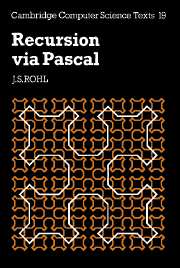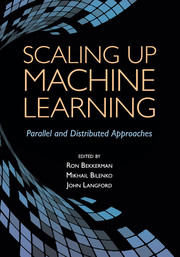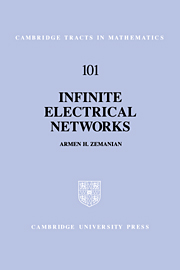Refine search
Actions for selected content:
48287 results in Computer Science
Rethinking Collaboration in Networked Music*
-
- Journal:
- Organised Sound / Volume 17 / Issue 1 / 14 February 2012
- Published online by Cambridge University Press:
- 14 February 2012, pp. 28-35
- Print publication:
- 14 February 2012
-
- Article
- Export citation
Composing for a Networked, Pulse-Based, Laptop Orchestra*
-
- Journal:
- Organised Sound / Volume 17 / Issue 1 / 14 February 2012
- Published online by Cambridge University Press:
- 14 February 2012, pp. 56-61
- Print publication:
- 14 February 2012
-
- Article
- Export citation
Syneme: Live
-
- Journal:
- Organised Sound / Volume 17 / Issue 1 / 14 February 2012
- Published online by Cambridge University Press:
- 14 February 2012, pp. 86-95
- Print publication:
- 14 February 2012
-
- Article
- Export citation
Building on the Foundations of Network Music: Exploring interaction contexts and shared robotic instruments*
-
- Journal:
- Organised Sound / Volume 17 / Issue 1 / 14 February 2012
- Published online by Cambridge University Press:
- 14 February 2012, pp. 62-72
- Print publication:
- 14 February 2012
-
- Article
- Export citation
Internet2 and Global Electroacoustic Music: Navigating a decision space of production, relationships and languages
-
- Journal:
- Organised Sound / Volume 17 / Issue 1 / 14 February 2012
- Published online by Cambridge University Press:
- 14 February 2012, pp. 4-15
- Print publication:
- 14 February 2012
-
- Article
- Export citation
Tele-Media and Instrument Making*
-
- Journal:
- Organised Sound / Volume 17 / Issue 1 / 14 February 2012
- Published online by Cambridge University Press:
- 14 February 2012, pp. 73-85
- Print publication:
- 14 February 2012
-
- Article
- Export citation
OSO volume 17 issue 1 Cover and Back matter
-
- Journal:
- Organised Sound / Volume 17 / Issue 1 / 14 February 2012
- Published online by Cambridge University Press:
- 14 February 2012, pp. b1-b2
- Print publication:
- 14 February 2012
-
- Article
-
- You have access
- Export citation
Editorial
-
- Journal:
- Organised Sound / Volume 17 / Issue 1 / 14 February 2012
- Published online by Cambridge University Press:
- 14 February 2012, pp. 1-3
- Print publication:
- 14 February 2012
-
- Article
-
- You have access
- HTML
- Export citation
Imposing a Networked Vibrotactile Communication System for Improvisational Suggestion
-
- Journal:
- Organised Sound / Volume 17 / Issue 1 / 14 February 2012
- Published online by Cambridge University Press:
- 14 February 2012, pp. 36-44
- Print publication:
- 14 February 2012
-
- Article
- Export citation
Network Socio-Synthesis and Emergence in NOMADS
-
- Journal:
- Organised Sound / Volume 17 / Issue 1 / 14 February 2012
- Published online by Cambridge University Press:
- 14 February 2012, pp. 45-55
- Print publication:
- 14 February 2012
-
- Article
- Export citation
Listening Through the Firewall: Semiotics of sound in networked improvisation
-
- Journal:
- Organised Sound / Volume 17 / Issue 1 / 14 February 2012
- Published online by Cambridge University Press:
- 14 February 2012, pp. 16-27
- Print publication:
- 14 February 2012
-
- Article
- Export citation
RSL volume 5 issue 1 Cover and Back matter
-
- Journal:
- The Review of Symbolic Logic / Volume 5 / Issue 1 / March 2012
- Published online by Cambridge University Press:
- 13 February 2012, pp. b1-b3
- Print publication:
- March 2012
-
- Article
-
- You have access
- Export citation
RSL volume 5 issue 1 Cover and Front matter
-
- Journal:
- The Review of Symbolic Logic / Volume 5 / Issue 1 / March 2012
- Published online by Cambridge University Press:
- 13 February 2012, pp. f1-f4
- Print publication:
- March 2012
-
- Article
-
- You have access
- Export citation
On morphological relatedness
-
- Journal:
- Natural Language Engineering / Volume 19 / Issue 4 / October 2013
- Published online by Cambridge University Press:
- 10 February 2012, pp. 537-555
-
- Article
- Export citation
Spatial quantum search in a triangular network†
-
- Journal:
- Mathematical Structures in Computer Science / Volume 22 / Issue 3 / June 2012
- Published online by Cambridge University Press:
- 09 February 2012, pp. 521-531
-
- Article
- Export citation

Recursion via Pascal
-
- Published online:
- 05 February 2012
- Print publication:
- 26 July 1984

Scaling up Machine Learning
- Parallel and Distributed Approaches
-
- Published online:
- 05 February 2012
- Print publication:
- 30 December 2011

Infinite Electrical Networks
-
- Published online:
- 05 February 2012
- Print publication:
- 29 November 1991
 .
.